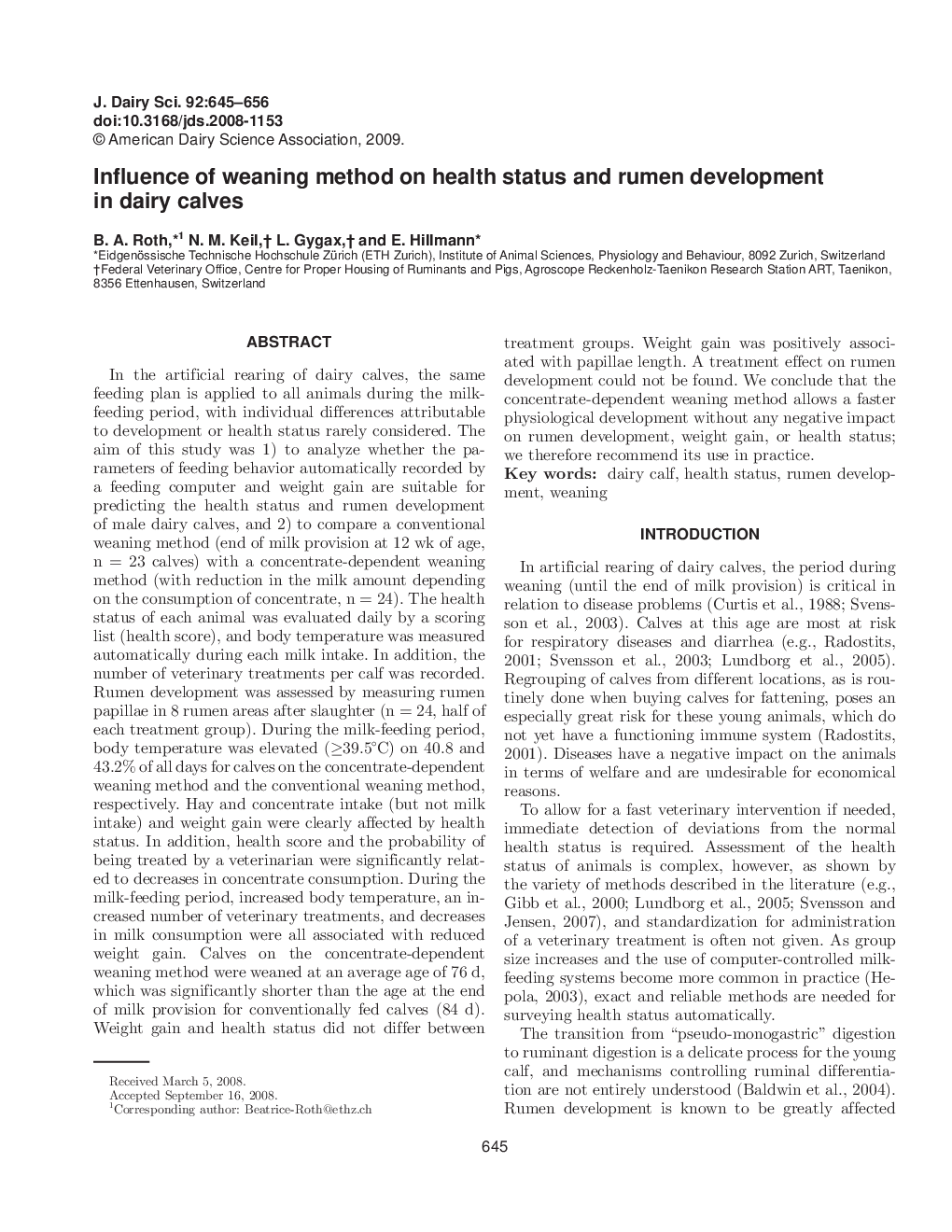| کد مقاله | کد نشریه | سال انتشار | مقاله انگلیسی | نسخه تمام متن |
|---|---|---|---|---|
| 2439413 | 1108096 | 2009 | 12 صفحه PDF | دانلود رایگان |
عنوان انگلیسی مقاله ISI
Influence of weaning method on health status and rumen development in dairy calves
دانلود مقاله + سفارش ترجمه
دانلود مقاله ISI انگلیسی
رایگان برای ایرانیان
کلمات کلیدی
موضوعات مرتبط
علوم زیستی و بیوفناوری
علوم کشاورزی و بیولوژیک
علوم دامی و جانورشناسی
پیش نمایش صفحه اول مقاله

چکیده انگلیسی
In the artificial rearing of dairy calves, the same feeding plan is applied to all animals during the milk-feeding period, with individual differences attributable to development or health status rarely considered. The aim of this study was 1) to analyze whether the parameters of feeding behavior automatically recorded by a feeding computer and weight gain are suitable for predicting the health status and rumen development of male dairy calves, and 2) to compare a conventional weaning method (end of milk provision at 12 wk of age, n = 23 calves) with a concentrate-dependent weaning method (with reduction in the milk amount depending on the consumption of concentrate, n = 24). The health status of each animal was evaluated daily by a scoring list (health score), and body temperature was measured automatically during each milk intake. In addition, the number of veterinary treatments per calf was recorded. Rumen development was assessed by measuring rumen papillae in 8 rumen areas after slaughter (n = 24, half of each treatment group). During the milk-feeding period, body temperature was elevated (â¥39.5°C) on 40.8 and 43.2% of all days for calves on the concentrate-dependent weaning method and the conventional weaning method, respectively. Hay and concentrate intake (but not milk intake) and weight gain were clearly affected by health status. In addition, health score and the probability of being treated by a veterinarian were significantly related to decreases in concentrate consumption. During the milk-feeding period, increased body temperature, an increased number of veterinary treatments, and decreases in milk consumption were all associated with reduced weight gain. Calves on the concentrate-dependent weaning method were weaned at an average age of 76 d, which was significantly shorter than the age at the end of milk provision for conventionally fed calves (84 d). Weight gain and health status did not differ between treatment groups. Weight gain was positively associated with papillae length. A treatment effect on rumen development could not be found. We conclude that the concentrate-dependent weaning method allows a faster physiological development without any negative impact on rumen development, weight gain, or health status; we therefore recommend its use in practice.
ناشر
Database: Elsevier - ScienceDirect (ساینس دایرکت)
Journal: Journal of Dairy Science - Volume 92, Issue 2, February 2009, Pages 645-656
Journal: Journal of Dairy Science - Volume 92, Issue 2, February 2009, Pages 645-656
نویسندگان
B.A. Roth, N.M. Keil, L. Gygax, E. Hillmann,